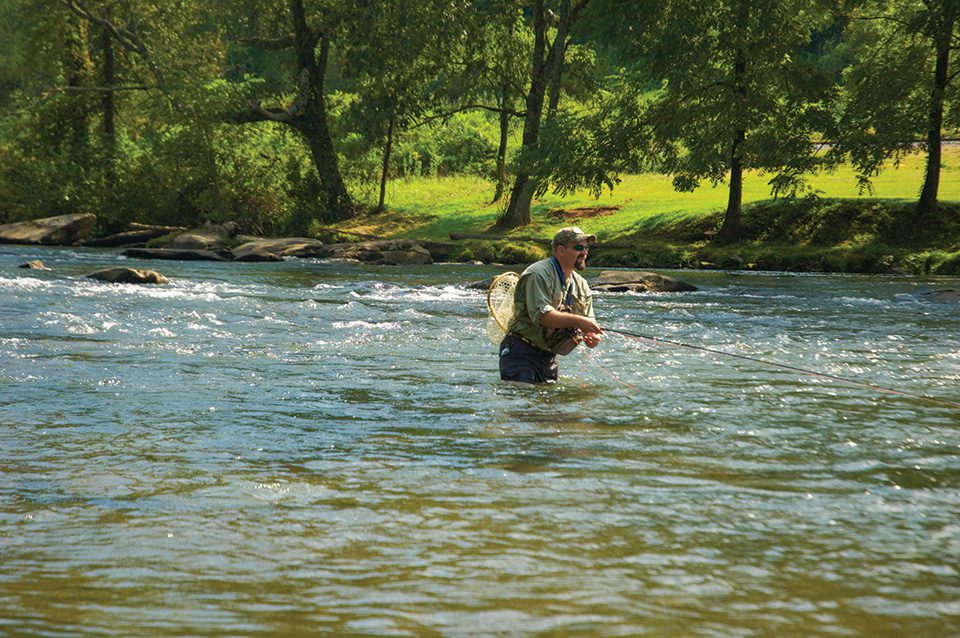Delayed harvest (DH) trout seasons are in full swing across the Southeast. With catch-and-release regulations, streams will stay full of trout through the cool months, providing anglers excellent action. Here’s a quick look at one of Georgia’s best DH streams. This description of the Toccoa River in the mountains southeast of Blue Ridge, Ga. is an abbreviated excerpt from the book “Flyfisher’s Guide to North Carolina & Georgia.”
Upstream of Lake Blue Ridge, the Toccoa River is large and wide in comparison to most Georgia trout streams. Even high in the drainage, it offers plenty of room for airing out casts. The main river and several of its tributaries are stocked heavily with mostly rainbow trout. There is some reproduction in the river’s tributaries, so the occasional wild fish and a few brown trout might show up. It is a good fishery because it is full of fish, but it is a better fishery during the cooler months when the water is cold and the trout are more active.
The upper Toccoa’s DH stretch is 1.5 miles of water on the lower end of the river’s trout water that has been set aside as catch-and-release, single-hook, artificial only from Nov. 1-May 14 each year. From personal experience, it is one of the best of Georgia’s DH streams.
Size is one of the main reasons the Toccoa DH is so good. There are good deep holes as well as some runs and pocket water big enough to be considered deep holes on most other Georgia trout streams. Even with just a mile and a half of water, there is a lot to fish.
The Toccoa DH also seems to receive stockings of some larger fish through the DH season. On one January trip with snow on the ground, a buddy and I got into a pod of rainbows in the 14- to 18-inch range that ate flashy egg patterns and San Juan Worms until we got tired of sucking ice out of our guides.
The DH section runs from the Sandy Bottom Canoe Access downstream to Shallowford Bridge, which is generally considered the bottom of the decent trout water. A road and a trail run the length of this stretch of river, so access is good, although high water can make it difficult to wade.
As with any stream with easy access, the best-looking, most-visible areas receive most of the pressure, so it can be worthwhile to find areas that require a little walk. Or, you can fish from a float tube, canoe or kayak and hit all of the holes. Bring an anchor or the short float will be over before you’ve had a chance to string your rod up.
“Flyfisher’s Guide to North Carolina & Georgia” includes maps, GPS access points and detailed descriptions of the region’s best trout fishing. It is available on Amazon, at fly shops or by contacting the author at nsc8957@gmail.com.
